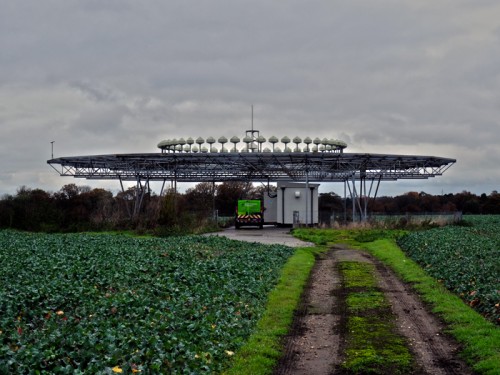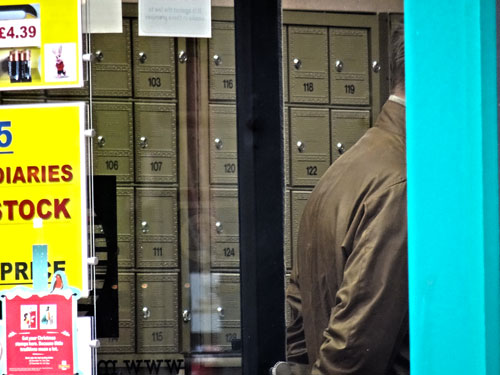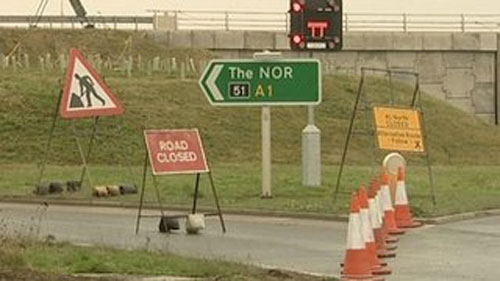This essay is the first of a series of reports from The Nor, an investigation into paranoia, electromagnetism, and infrastructure.
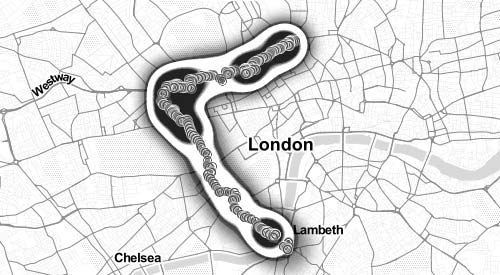
On the morning of Thursday, 30th October 2014, I set out to walk the perimeter of the London Congestion Charge Zone, a journey of some twelve miles around the centre of the city. I began at King’s Cross, and walked widdershins, down the Euston Road towards Paddington. At its Western end, the Zone’s edge turns down Edgware Road, runs down Park Lane, Grosvenor Place, and Vauxhall Bridge Road, before changing course again across the river towards Elephant & Castle, Tower Bridge, Spitalfields, Shoreditch, and returns to Kings Cross once more by City Road.
For reasons that will become clear, I did not complete this walk within the day. I did however document the portion which I undertook – roughly, half of the total – in the form of 427 photos of surveillance cameras. I photographed every camera which I saw, which could see me (consider this a gross underestimation of the total). You can explore all of these photographs at Flickr, and this interactive map.
The Congestion Charge Zone covers the area enclosed by the Third London Wall. This Wall continues the transformation, begun by the Second, from a physical into an electromagnetic entity. It is made of bits, electrons and radio waves, becoming less and less visible even as it becomes more pervasive.
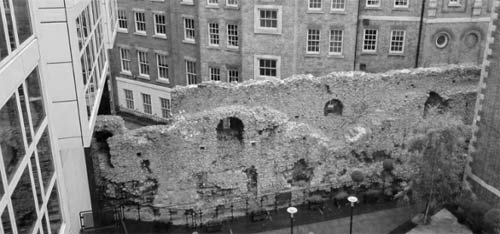
The First London Wall was built in the late 2nd century by the Romans, in response to a political crisis. Following the murder of Pertinax in 193 – the Year of the Five Emperors – the Empire split into civil war. Clodius Albinus, governor of Britain, allied with Septimius Severus, commander of the troops in Illyricum and Pannonia, but soon turned against him, proclaiming himself Emperor with the support of the legions in Britain and Hispania.
When Albinus narrowly escaped assassination by one of Severus’ messengers in 196 he put himself at the head of a 150,000 strong army and ordered the construction of fortifications around the city. Albinus did not last long: sailing to Gaul, he met Severus’ army at Lugdunum (modern Lyon). In short order he was defeated and beheaded, his headless body tossed into the Rhine, and the head sent to Rome as a warning to other usurpers.
The Romans and their successors rebuilt and refortified the Wall for the next thousand years. Enclosing some 330 acres, the Wall forced all visitors to pass through seven narrow gates which connected the city to the Roman road system. Following the Blitz, the remaining fragments of the Wall were among the highest structures still standing in the City, and can still be found extant at Barbican and Tower Hill.
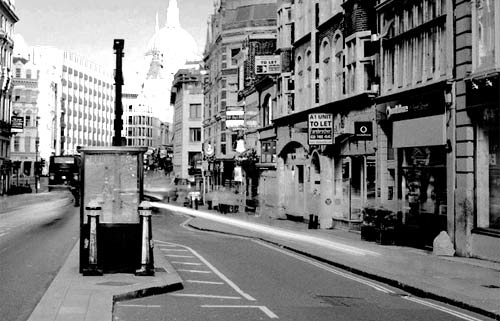
The Second Wall was erected some 1800 years later on the orders of the City of London Police, following the bombing of the Baltic Exchange in 1992 and Bishopsgate in 1993. Rather than the Kentish ragstone which made up the First Wall, the Second Wall was built of sentry boxes and roadblocks, with access streets narrowed to chicanes to slow vehicles at designated choke points. (As with the redesign of Oxford Street following the Gordon Riots of 1780, and in contrast to Haussmann’s strategy in Paris, London pioneered the use of congestion as a tool of state control, which, if nothing else, is true to the sclerotic nature of the city itself.)
The Second Wall, commonly known as the “ring of steel”, extended only slightly beyond the boundaries of the first, as the new loci of value, the towers of global finance, were broadly contiguous with older forms of wealth and power. In 2003, following the September 11th attacks on New York City, but preceding the 7 July 2005 bombings on London itself, the Police described the likelihood of a terrorist attack on the city as “inevitable” and widened the ring slightly, but ever since the 1996 bombing of Docklands it had been both obvious and inevitable that a physically static Wall would not be sufficient. Instead, the wall must expand, and diffuse.
Much like its predecessor, the Second Wall still stands, but it has been entirely subsumed within the territory of the Third. Its sentry boxes are frequently left vacant, its gates left open. The only permanently operating components, its video cameras, form an inner processing ring reinforcing those of its successor.
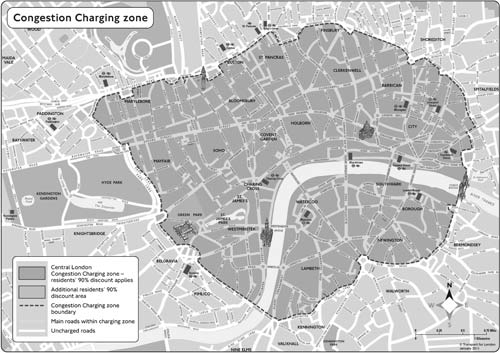
The Third London Wall – that which surrounds the Congestion Charge Zone – was completed in February 2003, and extended the traditional zone of the Wall from the financial district of the Square Mile to the West End, the commercial and entertainment district. In this manner it follows, predictably and admittedly somewhat belatedly, the expansion of capitalism itself into the realm of everyday life.
The core technology of the Third Wall, again pioneered but only partially implemented by the Second, is Automated Number Plate Recognition, or ANPR. Installations of over 800 ANPR cameras record the unique ID of every vehicle which enters the Zone in vast databases for later analysis. When the Wall was initially constructed, the public were informed that this data would only be held, and regularly purged, by Transport for London, who oversee traffic matters in the city. However, within less than five years, the Home Secretary gave the Metropolitan Police full access to this system, which allowed them to take a complete copy of the data produced by the system.
This permission to access the data was granted to the Police on the sole condition that they only used it when National Security was under threat. But since the data was now in their possession, the Police reclassified it as “Crime” data and now use it for general policing matters, despite the wording of the original permission. As this data is not considered to be “personal data” within the definition of the law, the Police are under no obligation to destroy it, and may retain their ongoing record of all vehicle movements within the city for as long as they desire.
The ANPR cameras which operate on, within, and beyond the boundaries of the Congestion Charge Zone capture several pieces of data at once, in two forms. The first is raw information: the unique plate number of the vehicle tracked, the date and time of the tracking, and the location. The other two are images: a cropped image of the plate itself, for supporting the automated “read”, and a wider image of whole vehicle at the moment it is tracked, which may also include other vehicles, the roadway, the driver, passengers, and passers-by.
The gradual vacation of the human sentry boxes of the ring of steel, and their replacement with the automated eyes and minds of the ANPR system are mirrored, out of sight, by the replacement of rooms of watchers with databases, and of cartographers with LIDAR systems atop cars, and sensors aboard satellites in low earth orbits. Watching robots, camera drones, these seeing systems operate continuously, beyond the range of human interest and endurance. And they operate, always, from above, giving them the privilege of surveillance.
Surveillance images are all “before” images, in the sense of “before and after”. The “after” might be anything: an earthquake, a riot, a protest, a war. Any system reliant on flow, which is all networks from vehicle traffic to commercial supply to video feeds to the internet itself, views disruptions within the same negative moral context. Surveillance images attain the status of evidence for unknown crimes the moment they are created, and merely await the identification of the moment they were created for. Automated imagery criminalises its subject.
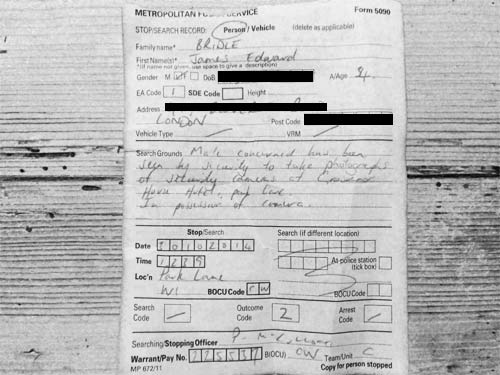
Suspicion is a global variable. Once triggered it bubbles upward through the entire system. Walking down Park Lane, I was accosted by a man in a suit who demanded to know what I was doing. He took out his mobile phone, pointed it at my face, told me he was going to “circulate my description”.
Shortly afterwards, a colleague of his physically restrained me and called the police. Both men worked at the Grosvenor House Hotel, whose cameras were among those which had been trained on me as I walked, and so are included in my documentation.
When they arrived, the police officers explained that carrying a camera in the vicinity of Central London was grounds for suspicion. I might be a terrorist who posed a threat to the good citizens of London – my own city. Equally I might be casing the joint for some future crime, studying its defences in order to circumvent them.
Carrying a camera thus justified the suspicion of the security guards who stopped me and performed a citizen’s arrest, detaining me until the arrival of the police. This suspicion in turn justified the actions of the police, who threatened me with arrest if I did not identify myself and explain my actions. For carrying a camera, I was told, I could be taken to the station and charged with “Going Equipped”, a provision of the 1968 Theft Act which determines the imprisonment for up to three years of anyone carrying equipment which may be used to commit a burglary.
Of course, the threats of the policemen were utterly baseless. Of course the use of cameras in public, as dictated in numerous statements by the Metropolitan Police themselves, is not, and should not be construed as, a crime. But, as anyone who has ever encountered the police in an analogous situation knows, the law comes a distant second to the exercise of power itself.
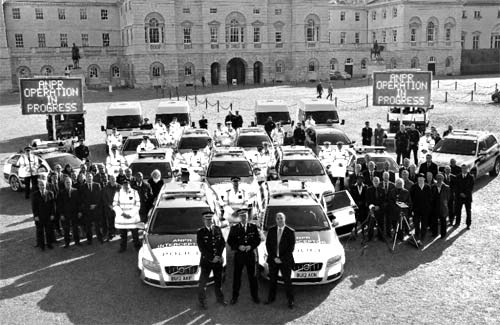
The Fourth London Wall will be made of transponders carried in the vehicles themselves. Various forms of these are already on trial in the United States, where the E-ZPass system has migrated from toll bridges and tunnels and out into the wider city, where it can track the passage of vehicles with radio waves. The introduction of diagnostic data ports in cars has lead to the uptake of consumer monitors which also transmit location data, as do many common GPS systems. These systems will soon be formalised in the eCall platform, which will be mandatory in all new vehicles by the end of 2015.
It is also being seen in the development and deployment of roving ANPR, fitted to every police vehicle and soon onto the bodies of council operatives themselves. Finally, the Wall loses all physical definition, becoming a truly ubiquitous zone, rather than a fixed barrier.
As the intentionality of the camera’s image disappears into automation, and the Wall becomes ethereal and obscure, so the image itself dissolves, replaced by data. Cameras no longer see in pictures, but record and process information: the string of numbers on a car license plate, the dimensions of a human face, the IMEI of a mobile phone, the infrared reflectivity of plants, the depth and tonality of a voice.
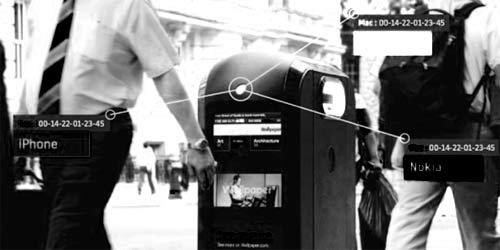
Around the time of the Fifth Wall, the system (which once contained actual human sensors, men with spears atop its ramparts), will regain the ability to see individuals. At first, this will be done through the medium of mobile phone tracking, which is also already present within the Zone. The swift shut-down by the City of London of the Renew ’spy bins’ which tracked the movements of passers-by belies the widespread existing implementation of the system in shops and retail zones across the city, continually monitoring the movements of shoppers and passers-by.
At the same time, camera systems deployed at the airports in the outer reaches of the zone have already developed the ability to read human faces, irises, expressions and gaits in exactly the same manner as their ANPR predecessors, and build unique, storeable profiles from them. While it’s always amusing to think of how such systems could be evaded through the use of masks or disruptive patterns, it should be noted that Section 60AA of the Criminal Justice and Public Order Act 1994, deployed across Central London on the night of 5th November 2014, gives the Police the right to define a zone in which anyone refusing to reveal their face may be imprisoned for up to a month.
Each Wall, and the Abstract Wall in its totality, is a model-mirror of social processes. As the Third Wall is the natural product of the expansion of financial systems and logics from the banking sector into every other, and the Fourth Wall addresses the mechanisation of the supply chain and the domination of logistics systems, so the Fifth goes hand in hand with the rapidly expanding privatisation of public space, the latest weapon being deployed against Londoners’ lingering desire for the freedoms of city life.
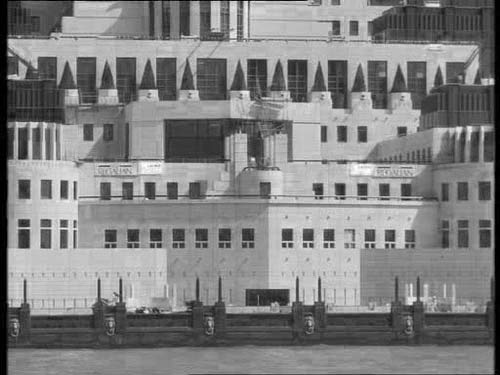
I finished my walk at Vauxhall, as my detention on Park Lane had cost the better part of the early afternoon. I hope to complete the walk at a later date. The decision to stop was made, appropriately enough, in the shadow of Vauxhall Cross, the headquarters of the Secret Intelligence Service, MI6. The blazing red spot on the map, denoting a concentration of cameras, is accounted for by this – and by the far more mysterious building at 1 Bessborough Gardens on the other side of the river, blank-faced, festooned with cameras, whose neighbours regularly complain of electromagnetic interference.
For contrast, see the statistically unlikely dearth of cameras shown in the area south of the Grosvenor Park Hotel, on the lower half of Park Lane. Of course, there aren’t fewer cameras there. It’s a high-risk area. An area attractive to thieves, and terrorists. But when you’ve been physically restrained by blank men in suits, lectured and threatened by police officers, you really just want to get away from there as quickly as possible. When you get in trouble for looking at the cameras, you stop looking at the cameras. But you should really be looking at the cameras.
One of the defining characteristics of the Wall is that it is not, and cannot be, voluntary. While some of the strategies listed here are based on cooperation with the Wall system (tachyometers, navigation and check-in apps, fitness monitors and wearable computers), these are always the accompaniment or introduction to mandatory systems, and are best seen as elective, collaborative trials rather than early adoption or individualistic disruption. Each successive Wall is only erected when the relevant technologies and social systems have arisen that no longer depend on consent.
The Sixth Wall will be built from the things you wear on your body and arrange on the shelves in your bedroom. Nest, QOL, Hue. Automatic. Smart TVs. HAPIfork. Vessyl. Autographer. Memeto. Glass. Dropcam. Jawbone. Fuel. Withings. Fitbit. Healthkit. Little policemen in your pocket, little policemen on your skin.
The Sixth Wall will be made of intelligent dust which settles in the folds of your clothes and communicates your position and heart rate to orbiting satellites. London’s citizens will dream, and the images of their dreams will dance on the telescreens of Piccadilly Circus, and be found wanting.
*
Follow @jamesbridle on Twitter for further updates from The Nor project, or sign up at booktwo.org for this and more of my work.
